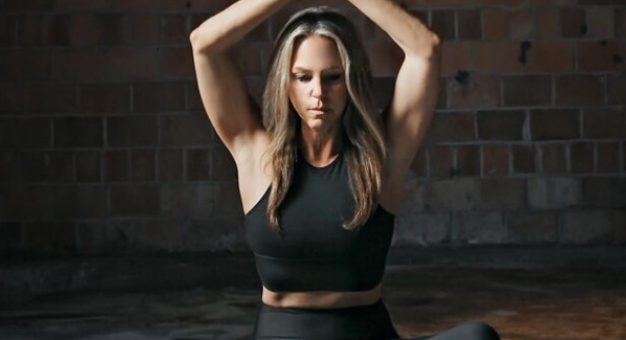Landscaping takes many forms, but the charming garden is the most welcoming of them all. Gardening is also a wonderful project to work on year after year, rather than the typical project you install once and then forget about. Whether you’re dreaming of homegrown vegetables, charming flowers to cut for the table, or herbs to attract butterflies and bees, the basics of how to start a garden remain the same. You’ll start with a few garden supplies, including decorative elements that match the style you desire for your new outdoor space. Think of your garden as a sort of freeform outdoor room, and know you’ll find plenty of inspiration here at Ashley.
Essential Garden Tools
It’s easy to get overwhelmed by the sheer variety of specialty garden tools available today. But take heart! You really only need a few basic tools to enjoy most home gardening chores. The essential garden tool lineup includes:
- Short-handled spade
- Hand trowel
- Good-fitting set of gloves
- Pair of hand pruners
- At least one rake
Invest in quality versions rather than the most affordable ones, as good ergonomics and durability will pay off in your health for years to come. Other important gardening tools to expand your collection include long-handled loppers, easy-to-maneuver wheelbarrows, gardening forks that help fluff mulch and turn the soil, and a loop hoe for chopping weeds without bending over. Backyard gardeners are unlikely to need power tools like tillers or augers, but you can also purchase those if you are going all-out in your gardening endeavors. After you invest in tools and a few indoor planters to help bring Mother Nature inside, you may want a potting shed to store your new gardening gear.
Best Garden Decor
When planning how to start an herb garden or other formal design, you need to consider the decorations in the garden just as much as the soil quality or plant groupings. Garden decor sets the tone for the outdoor space and shows off a little bit of your personality as well. For an elegant look that’s more traditional, try sculptures, scrolled fountains, and cast iron details on gates and fences. Stick to recreations of well-known pieces for a classic style.
Did you know that the modern garden also doubles as an outdoor art display? This is especially true when you find one-of-a-kind pieces. It’s easier to add whimsical pieces or those that reference recent design trends when choosing a contemporary style. Some types of garden decor, such as arbors or mirrors, can be found to match every style thanks to variations in finish or design. Use these features to draw the eye through the garden and make it seem larger than it is, especially if you use fencing or hedges to create a cozy atmosphere. Charming gardens feature just a few eye-catching details in a cohesive theme, not a mishmash of garden art that doesn’t flow together.
When to Water Your Garden
Getting the right amount of water for your plants is gardening 101. Yet this process is a little more complicated than just grabbing a watering can or a garden hose. Those tools will indeed work for small flower beds and containers. But for larger landscaping features or gardens that cover more than 100 square feet in each area, irrigation systems like drip emitters or soak hoses are a better choice. These systems require a little installation, but you can find complete kits designed to simplify the process. Setting up irrigation equipment simplifies watering because you can install a timer that will release water when it’s needed the most each week. The watering timeframe can be adjusted depending on whether you have thirsty plants or desert-adapted species that rarely need watering.
Don’t wait until plants wilt or show signs of heat stress to water. When learning how to start a garden from scratch, you’ll need to learn your area’s average rainfall and compare it to what the plants need each week. Almost all vegetables, flowers, and herbs will need a bare minimum of 1 inch of water per week. If you check the weather forecast and there’s no rain coming for the next week, you’ll need to water your garden. Try to apply water as soon as the top few inches of soil are drying out so it doesn’t have trouble penetrating dry and hardened soil. On the other hand, watering too often will lead to fungal diseases and plants wilting due to root rot rather than dehydration.
Keep the Wildlife Out
Few things are as universal in the quest to learn how to start a vegetable garden as the loss of tender plants to hungry animals. Even if you’re only growing flowers or herbs, you’re likely to see the results of wildlife visiting and taking a nibble. Part of the key is knowing the best time to start a garden. Each type of plant has a different time for when it grows best. For example, many annual flowers are direct-seeded in the spring after temperatures warm up for the year. Other flowers come back year after year but only when planted from bulbs in the fall. Planting during the right time of year ensures strong and rapid growth, helping the plant outgrow any attempts to eat it.
For more determined rabbits or deer, only fencing will do. The key is finding an animal-proof fence that adds to the garden’s beauty rather than distracting from it. Invisible deer netting isn’t quite as see-through as it sounds, but from a distance, it’s hardly noticeable. Stake the bottom of the netting to the ground to discourage rabbits. Solid wood fencing offers good protection and an attractive appearance once it starts to weather. An ornate gate helps make fencing a decorative feature. Even if you don’t manage to keep all the animals out at first, faux plants can always fill in the gaps until you get replacements established.
The key to establishing a beautiful garden is considering the local conditions and working with them rather than against them. Whether you have a lot of rain, only a short growing season, or a small garden area to work with, there are ways to make your outdoor spaces shine with help from us at Ashley Furniture.
Share the space you create by using #MyAshleyHome on Instagram to possibly be featured on our feed! We’d also love to know your work-from-home tips and tricks. You can also find more home office inspiration on Pinterest.





